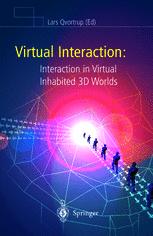

Most ebook files are in PDF format, so you can easily read them using various software such as Foxit Reader or directly on the Google Chrome browser.
Some ebook files are released by publishers in other formats such as .awz, .mobi, .epub, .fb2, etc. You may need to install specific software to read these formats on mobile/PC, such as Calibre.
Please read the tutorial at this link: https://ebookbell.com/faq
We offer FREE conversion to the popular formats you request; however, this may take some time. Therefore, right after payment, please email us, and we will try to provide the service as quickly as possible.
For some exceptional file formats or broken links (if any), please refrain from opening any disputes. Instead, email us first, and we will try to assist within a maximum of 6 hours.
EbookBell Team

4.7
76 reviewsLars Qvortrup The world of interactive 3D multimedia is a cross-institutional world. Here, researchers from media studies, linguistics, dramaturgy, media technology, 3D modelling, robotics, computer science, sociology etc. etc. meet. In order not to create a new tower of Babel, it is important to develop a set of common concepts and references. This is the aim of the first section of the book. In Chapter 2, Jens F. Jensen identifies the roots of interaction and interactivity in media studies, literature studies and computer science, and presents definitions of interaction as something going on among agents and agents and objects, and of interactivity as a property of media supporting interaction. Similarly, he makes a classification of human users, avatars, autonomous agents and objects, demon strating that no universal differences can be made. We are dealing with a continuum. While Jensen approaches these categories from a semiotic point of view, in Chapter 3 Peer Mylov discusses similar isues from a psychological point of view. Seen from the user's perspective, a basic difference is that between stage and back-stage (or rather: front-stage), i. e. between the real "I" and "we" and the virtual, representational "I" and "we". Focusing on the computer as a stage, in Chapter 4 Kj0lner and Lehmann use the theatre metaphor to conceptualize the stage phenomena and the relationship between stage and front-stage.